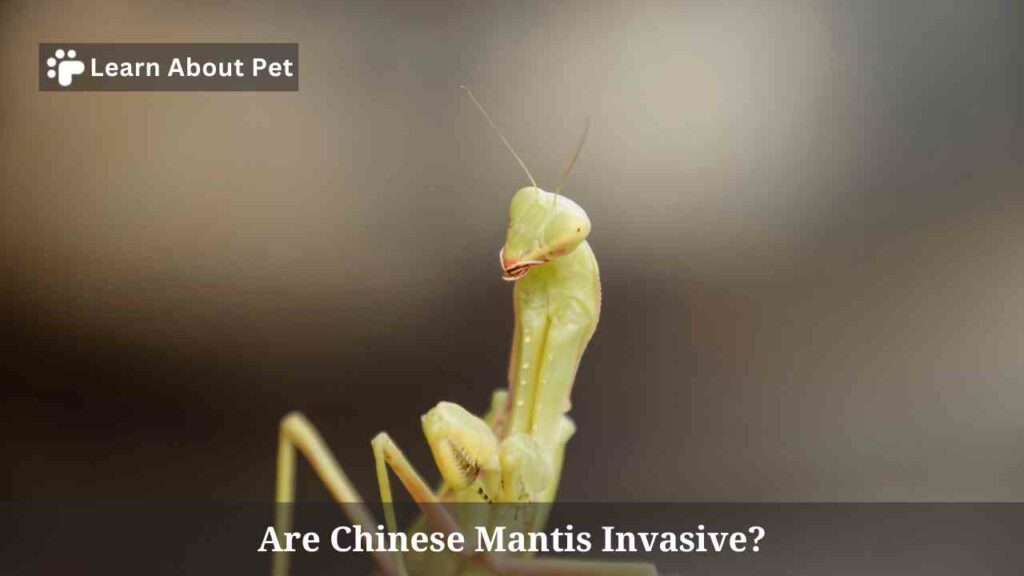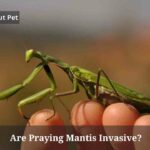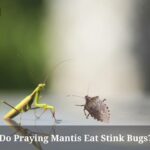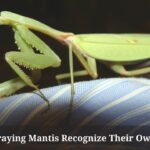Since the introduction of Chinese Mantises, many people have raised concerns due to potential competition with native mantis species.
Are Chinese mantis invasive? Chinese mantises are not inherently bad. They serve as valuable predators for various garden pests.
Let’s explore whether these striking insects are causing any harm to the local ecosystem and what sets them apart from their American counterparts. The Chinese mantis was introduced as a biological control for pest insects.
While it has become a common sight, especially in gardens, it is essential to understand their impact on the environment.

Are Chinese Mantis Invasive in USA?
Are Chinese mantis invasive in the US? The Chinese mantis has successfully established itself in many parts of the USA. Their larger size and voracious appetite for insects can influence local ecosystems.
So, are Chinese praying mantis bad? While they are excellent at controlling garden pests, their presence can sometimes disrupt the balance in native insect populations.
What is the Difference Between a Chinese Praying Mantis and an American Praying Mantis?
Chinese mantises are distinguishable from their American counterparts by their larger size and coloration. They tend to be light brown or green and can reach up to six inches in length.
American mantises, on the other hand, are typically smaller, with green or brown coloration.
Are Chinese Mantis Bad For the Environment?
Chinese mantises, when considered in the context of their introduction to new environments, can have both positive and negative effects.
While they help control pest populations, their presence can sometimes lead to competition with native species.
Should I Kill Chinese Mantis?
It is not necessary to kill Chinese mantises on sight. If you notice an abundance of them in your garden, consider the potential impact on the local ecosystem.
In some cases, you may choose to relocate them or encourage native mantis species. Now, let’s explore Invasive Praying Mantis vs Native.
Chinese Mantis vs Praying Mantis
| Aspect | Chinese Mantis | Praying Mantis |
| Scientific Name | Tenodera sinensis | Mantodea (Order) |
| Introduction History | Introduced to the US in the late 19th century | Native to various regions globally |
| Coloration | Light brown to green | Green or brown, camouflaging with their habitat |
| Size | Larger, can reach up to 6 inches in length | Varied, typically smaller than Chinese mantises |
| Diet | Generalist predator, feeding on various insects | Primarily insectivorous, consuming smaller prey |
| Behavior | Patient hunters, known for their agility | Display characteristic “praying” stance |
| Introduction Purpose | Introduced as biological pest control | A natural part of local ecosystems |
| Geographic Distribution | Widely distributed in the USA | Found globally in diverse habitats |
| Potential Impact on the Ecosystem | May disrupt local insect populations | An integral part of local food webs |
| Conservation Status | Concerns about competition with native species | No conservation concerns, natural populations |
| Unique Characteristics | Distinctive size and coloration | “Praying” posture, agile and stealthy hunters |
Final Verdict
To conclude the question, are Chinese mantis invasive? Chinese mantises are not inherently bad, but their introduction to the United States has raised concerns about their potential impact on native mantis species and the overall ecosystem.
Observing their presence and understanding the local context is essential in deciding how to manage them in your environment.

Welcome to Learn About Pet. My name is Rajkumar Ravichandran and I love all pets, travel, and amazing food. I write about my passion and personal experience caring for multiple pets in this blog! ❤️
Post Disclaimer
DISCLAIMER: THIS BLOG OR WEBSITE, "Learn About Pet", DOES NOT PROVIDE YOU WITH MEDICAL ADVICE AND IS NOT A SUBSTITUTE FOR MEDICAL ADVICE. ALWAYS GET IN TOUCH WITH YOUR PERSONAL VETERINARIAN AND USE INFORMATION HERE AS GENERAL ADVICE.
The information, including but not limited to, text, graphics, images and other material contained on this website are for informational purposes only. No material on this site is intended to be a substitute for professional veterinary advice, food recommendation, diagnosis, or treatment. Always seek the advice of your veterinarian or other qualified health care provider with any questions you may have regarding a medical condition or for pet food related questions.







